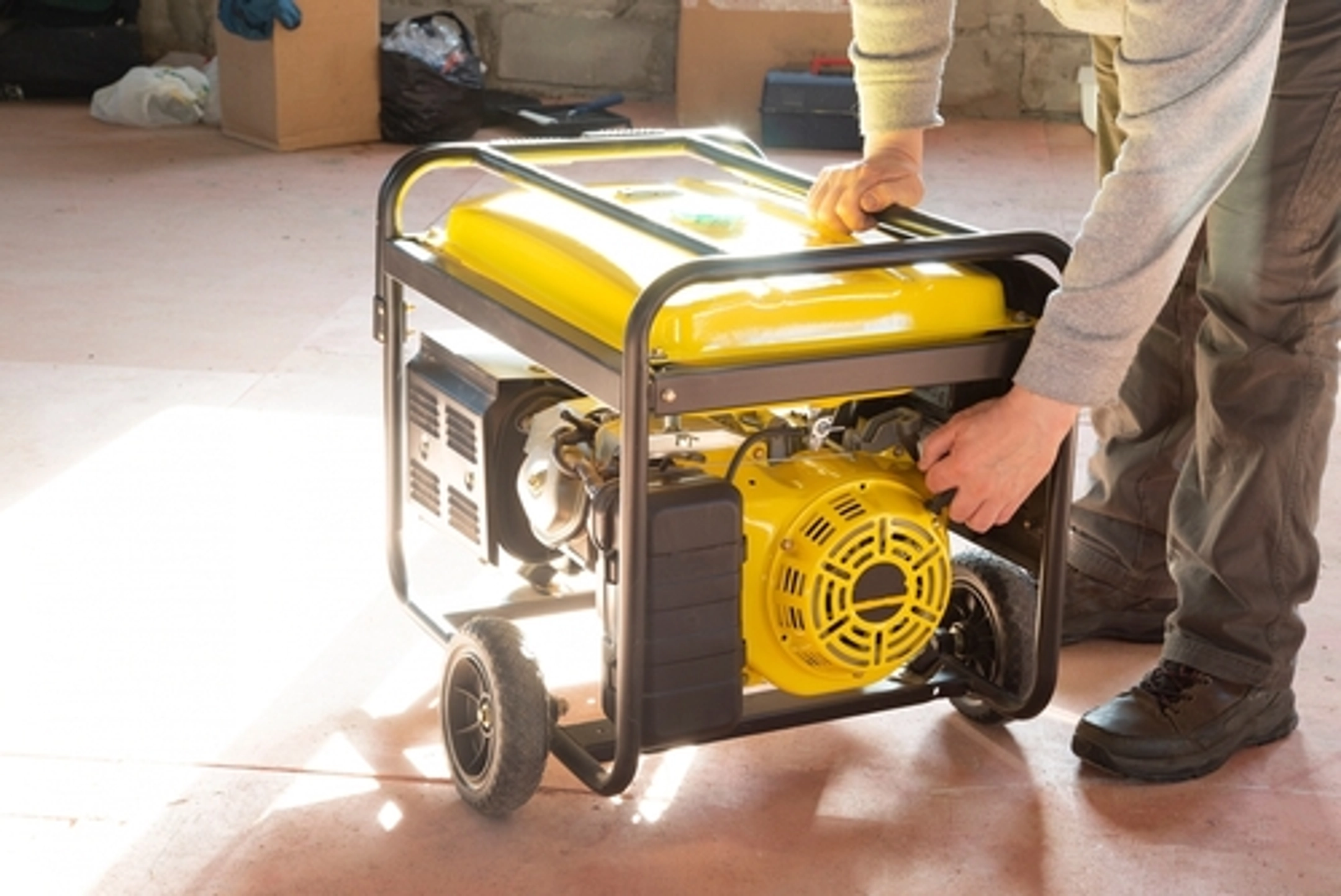
Most of us don’t even consider what life would be like without electrical power until we don’t have it. Any type of storm can take your home off the power grid for a few hours or even days in the most extreme circumstances. When that happens, your first concern may be finding an alternative power source like a portable generator to keep you and your family comfortable until the electricity can be reconnected to the grid. However there are some serious safety concerns to consider if you use an alternative power source, like carbon monoxide poisoning.
What is Carbon Monoxide?
According to the Minnesota Department of Health, “Carbon monoxide (CO) is an odorless, colorless gas formed by the incomplete combustion of fuels. When people are exposed to CO gas, the CO molecules will displace the oxygen in their bodies and lead to poisoning.” The problem with carbon monoxide is that it has no color and no odor, so you don’t know until it is too late that you have been exposed to it.
How Carbon Monoxide Poisoning Happens
The Texas Department of Insurance states, “The most common causes of carbon monoxide building up are incorrectly installed or poorly maintained or ventilated appliances. This includes appliances like stoves and hot water heaters. Poorly ventilated fireplaces and other gas- or wood-burning appliances can also pose danger.”
Portable generators are also a common cause of carbon monoxide exposure. Generac warns that using this type of generator indoors can be deadly within minutes because of the exhaust fumes. It goes on to say that a portable generator should not be used even in a partially enclosed space such as a garage. It also states that this type of generator should only be used outdoors and set, “..far from windows, doors, vents, crawl spaces and in an area where adequate ventilation is available and will not accumulate deadly exhaust gas.”
Signs of Carbon Monoxide Poisoning
Health professionals with the Mayo Clinic say the signs and symptoms of carbon monoxide poisoning can be easy to miss. It also warns that long term exposure to the toxic fumes of carbon monoxide can mimic the flu but without a fever. The more distinct symptoms of carbon monoxide poisoning can include:
- Headache.
- Weakness.
- Dizziness.
- Nausea or vomiting.
- Shortness of breath.
- Confusion.
- Blurred vision.
- Drowsiness.
- Loss of muscle control.
- Loss of consciousness.
Preventing Carbon Monoxide Poisoning in Your Home
The best way to prevent CO poisoning in your dwelling is to install a carbon monoxide detector. The full CDC list of ways to keep you and your family safe from the possibility of carbon monoxide poisoning includes:
- Have your heating system, water heater, and any other gas, oil, or coal burning appliances serviced by a qualified technician every year.
- Do not use portable flameless chemical heaters indoors.
- If you smell an odor from your gas refrigerator have an expert service it. An odor from your gas refrigerator can mean it could be leaking CO.
- When you buy gas equipment, buy only equipment carrying the seal of a national testing agency, such as Underwriters’ Laboratories.
- Make sure your gas appliances are vented properly. Horizontal vent pipes for appliances, such as a water heater, should go up slightly as they go toward outdoors. This prevents CO from leaking if the joints or pipes aren’t fitted tightly.
- Have your chimney checked or cleaned every year. Chimneys can be blocked by debris. This can cause CO to build up inside your home or cabin.
- Never patch a vent pipe with tape, gum, or something else. This kind of patch can make CO build up in your home, cabin, or camper.
- Never use a gas range or oven for heating. Using a gas range or oven for heating can cause a buildup of CO inside your home, cabin, or camper.
- Never burn charcoal indoors. Burning charcoal – red, gray, black, or white – gives off CO.
- Never use a portable gas camp stove indoors. Using a gas camp stove indoors can cause CO to build up inside your home, cabin, or camper.
- Never use a generator inside your home, basement, or garage or less than 20 feet from any window, door, or vent.
- When using a generator, use a battery-powered or battery backup CO detector in your home.
SERVPRO® Provides Help Around-the-Clock
Storm damage can happen at any time. When you need cleanup and/or restoration services for your home or business, call the professionals at SERVPRO. With more than 2300 locations in the United States and Canada, there’s a SERVPRO near you to answer the call when disaster strikes anytime of the day or night.
From water and fire damage to mold damage, biohazard cleanup to odor removal and document restoration, SERVPRO has seen it all, and is dedicated to returning your property to pre-loss condition. Find your local franchise and know you can reach out no matter when. SERVPRO operates 24/7, including holidays, weekends, and in the middle of the night, ready to make it “Like it never even happened.”
For more information, visit our FAQ and Glossary.
Sources:
https://www.health.state.mn.us/communities/environment/air/toxins/index.html
https://www.mayoclinic.org/diseases-conditions/carbon-monoxide/symptoms-causes/syc-20370642
https://www.tdi.texas.gov/tips/how-to-avoid-carbon-monoxide-poisoning-at-home.html
https://www.generac.com/resources-and-tools/homeowner-resources/portable-generator-safety
https://www.mayoclinic.org/diseases-conditions/carbon-monoxide/symptoms-causes/syc-20370642
https://www.cdc.gov/co/faqs.htm
https://www.servpro.com/resources/general-cleaning/home-protection-four-types-safety-devices